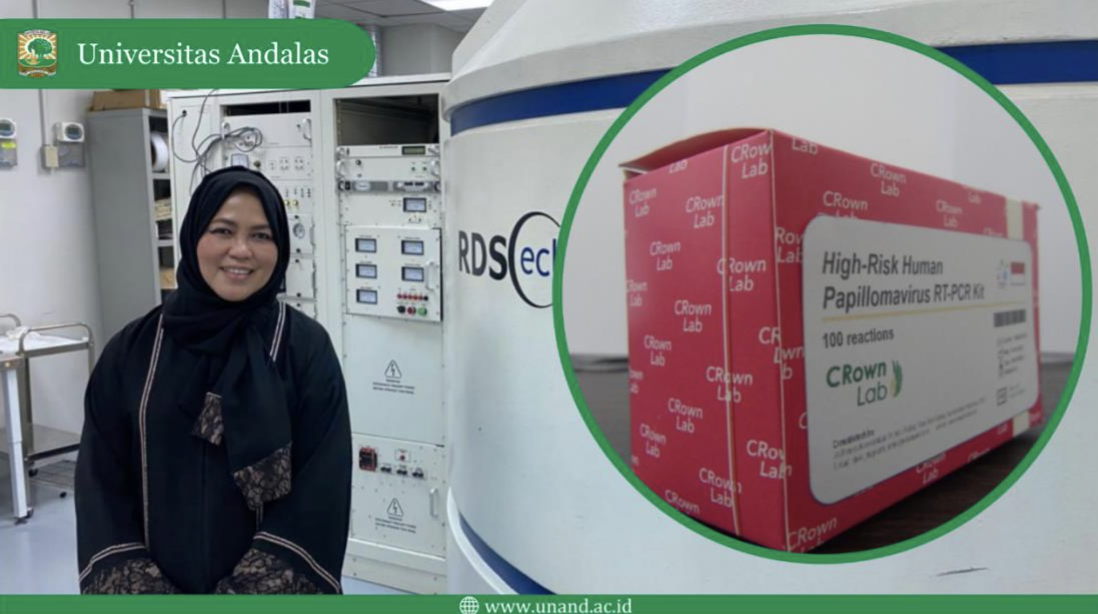Nuclear medicine is a unique field of science and plays an important role in the medical field. This science uses open radiation energy from the nuclear nucleus to assess organ function, diagnose, treat and treat diseases. Professor of Nuclear Medicine, Prof. Dr. dr. Aisyah Elliyanti, SpKN (K).,MKes, Faculty of Medicine,
Andalas University said "Nuclear medicine plays a major role in the treatment of cancer that is more integrated and comprehensive, so that cancer patients no longer need to move abroad for therapy,"
Nuclear medicine thernostic concept that provides systematically integrated information for diagnosing disease, so that disease management can be more efficient, and trial and error can be avoided. As an example, adjuvant therapy for thyroid cancer is differentiated by using radioactive iodine which can increase the cure rate. This is an example of thearonostics application using radiopharmaceuticals for diagnosis and therapy.
Multiplex Realtime PCR for the detection of high-risk human papilloma virus as a cause of cervical cancer
Uterine cervical cancer or cervical cancer is the second leading cause of death in women worldwide, including Indonesia. World data for 2020 shows that out of 600 thousand cases, there were 342 thousand deaths, while in Indonesia alone, out of 36 thousand cases, 21 thousand deaths were found.
Various screening methods have been developed for the detection of this malignancy, such as the pap smear or Acetic Acid Visual Inspection (IVA) to see changes in mucosal cells, but this method is more functional for detecting existing cancer cells. On the other hand, more than 90% of cervical cancers are associated with certain types of Human Papilloma Virus (HPV) infection which are categorized as 'high risk types', namely HPV 16, 18, 31, 33, 35, 39, 45, 51, 52, 56, 58, 59, 68, 73, and 82, although the predominant types are 16 and 18. The Center for Disease Control and Prevention (CDC) reports that 10% of women with HPV infection will develop cervical cancer. This is the basis that HPV screening is the best method to prevent the development of cervical cancer in women.
The Diagnostic and Research Center for Infectious Diseases (PDRPI) Faculty of Medicine, Andalas University, in collaboration with the Indonesian Obstetrics and Gynecology Association (POGI), especially the Oncology division, has formed a team to detect a diagnostic method based on nucleic acid amplification using the Multiplex Real Time PCR approach. The team consists of Dr.dr. Andani Eka Putra, MSc, dr. Linosefa, SpMK, Dr. Syandres Prima Putra, MSc from PDRPI and Dr.dr. Syamel Muhammad, SpOG, Onk, Dr.dr. Bobby Indra Utama SpOG from POGI.
The results showed that the sensitivity and specificity of the results reached 100% when compared with standard detection methods using GP and MY primers. However, this method is more effective and efficient because it does not require electrophoresis after nucleic acid amplification. The method we have developed is capable of simultaneously detecting 5 (five) types of HPV, namely 11, 16, 18, 45 and 52 within a maximum of 3 hours after the sample is received.
The research results have obtained a commercial collaboration with PT. Crown Technology Indonesia. Currently in the process of obtaining a Distribution Permit Number (NIE). The composition of the Domestic Component Level (TKDN) is around 60%, and is targeted to reach more than 90% within the next 1 year.
